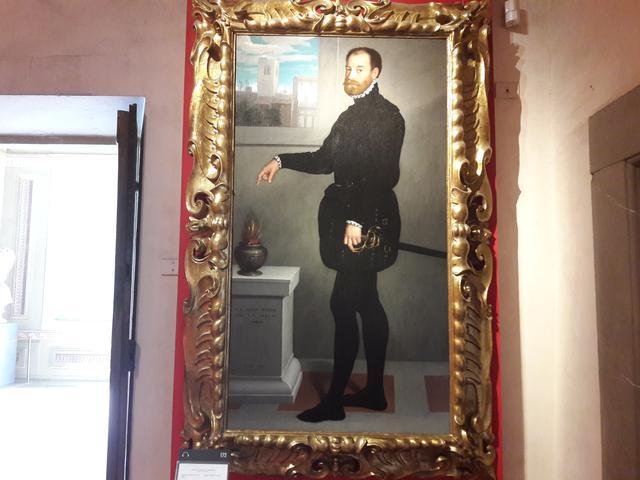Retrato del caballero Pietro Secco Suardo

The portrait of the knight Pietro Secco Suardo is an oil on canvas painting by Giovanni Battista Moroni, dated
Known since 1713, it was mentioned with certainty for the first time in an inventory of the Palazzo Pitti among the properties belonging to the Grand Prince Ferdinando, while it remained in the apartments of Violante at his death and then in those of Eleonora di Guastalla.
Already considered a representative of San Ignacio de Loyola, based on the current vision of Pamplona in the background. It was sent to the Galleria degli Uffici in 1797, in the room dedicated to Venetian art. It was initially identified in the Secco Suardi by Mazzi after a first restoration was carried out. The presence of the burning flame and the Latin motto that was translated into vernacular means Suardi, and the only one in the family who in 1563 may have been around forty years old, the date the painting was made, was Pietro. It was definitively recognized in the Bergamask knight Pietro Secco Suardo by Giovanni Morelli in 1904. His hypothesis was commonly accepted
Standing and life-size, the nobleman, dressed in black according to the fashion of the time, holds one hand on the hilt of the sword tied to his waist and with the other indicates a flame lit in a brazier. It also refers to the inscription on the altar "ET QVID VOLO NISI VT ARDEAT?" (What do I want, except that [the fire] burns?), Derived from the Gospel of Luke (12, 49), and chosen because it hides the surname "SUARDI" in acrostic. It is a small figurative enigma loved by the aristocracy of Bergamo, as can also be found in the portraits made here by Lorenzo Lotto.
The man is portrayed with a notable physiognomic penetration, which seems to have come from Bramantino's brush for geometric simplification and luministic control. The subject is placed near a window where you can see a crystalline Lombard landscape with the ruined Torre del Comune taken from the part of the San Salvatore hill, where the Bergamo homes of the Secco Suardo family were located, although they generally resided in Venice. . The knight's shadow is deformed on the checkered floor, denouncing a certain experimentalism carried out in those years by the painter.
© Tourblink